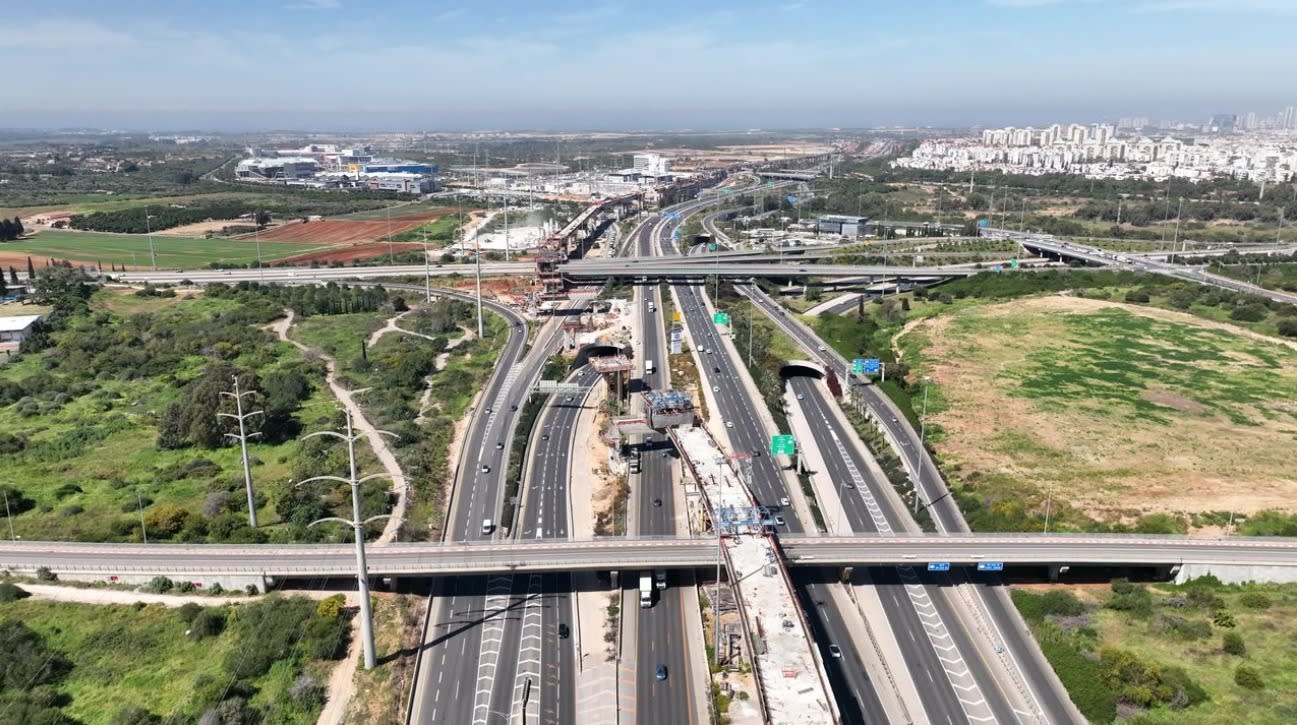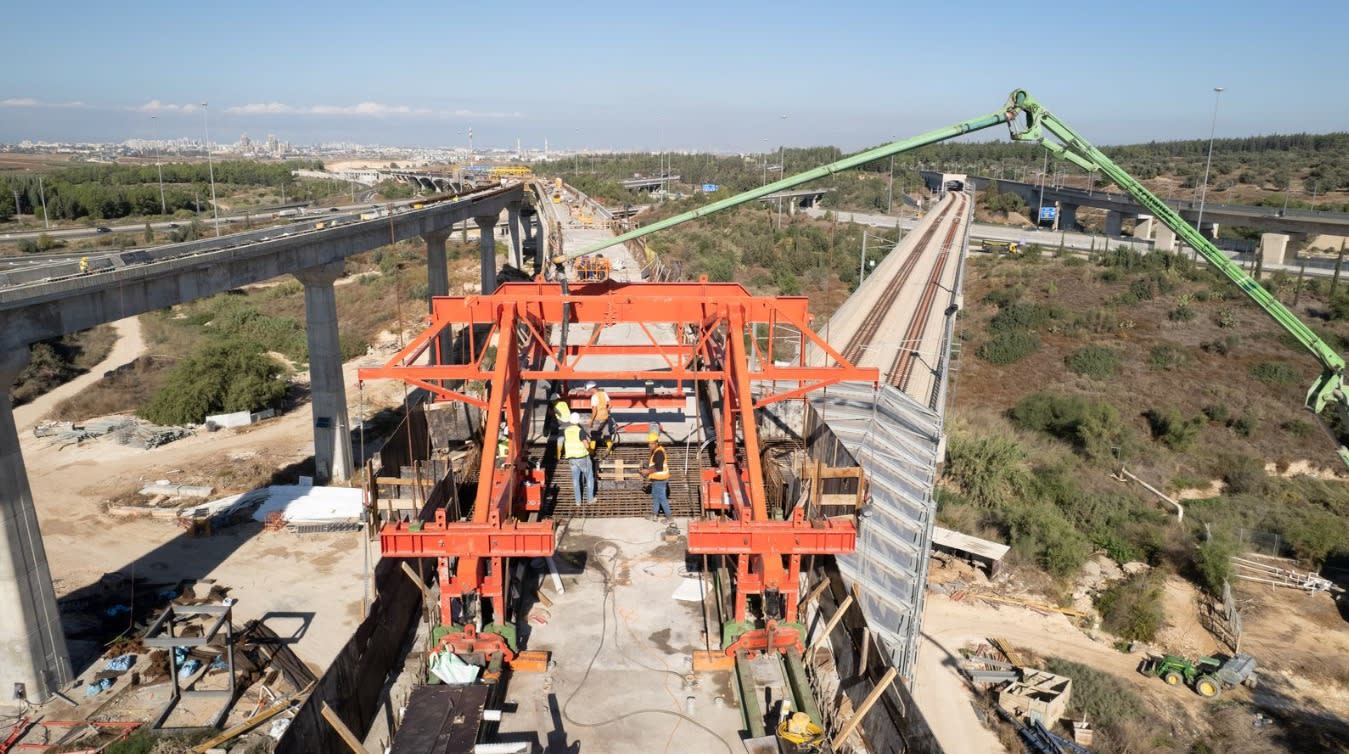Israel Railways is following the lead of the world’s leading railway companies and is promoting significant development projects to realize the strategic plan of the Ministry of Transport to prepare for the expected substantial increase in the volume of train travel. In 2019, the number of trips was close to 70 million a year, which is expected to soar by more than 180 percent to 200 million in 2030 and by another 140 percent to 300 million in 2040. Among the projects that will increase the railway infrastructure and provide a response to this significant increase – even in areas that have not benefited from rail service until now – are the Electrification Project, the Eastern Railway project, the 431 Railway project, and the Fourth Railway project of the Ayalon in Tel Aviv.
The Eastern Railway – an additional railway artery between the north and center of Israel that will connect additional areas to the railway network
Today, the only way to reach the center of Israel from the north by train is via the coastal line, which begins in Nahariya from the north and passes through the stations of Haifa, Binyamina, Hadera, Netanya, Herzliya, and Tel Aviv. In order to create an additional route, Israel Railways is currently working on the construction of the Eastern Railway. The project includes 65 kilometers of track, which is currently being built alongside Route 6.
This railway is of great importance not only in establishing an alternative to the coastal railway that will enable increasing the frequency of trains from the north to the south, but also in joining the periphery to the center and expanding train service to other areas. As part of the railway construction project, five new train stations are being built: Hadera East Station, Tira-Kochav Yair, Taybeh, Elad, and Shoham. With the construction of the stations and the operation of the Eastern Railway, additional communities will be connected by train to the center, and more residents will have equal employment opportunities and easier access to places of entertainment and commerce.
In addition to passenger transportation, Israel Railways plays a significant role in transporting goods in the country, transporting nearly 9 million tons of cargo annually from seaports, cargo terminals, and various logistics centers. In this way, Israel Railways is already contributing to reducing road congestion and air pollution by operating 60 cargo trains daily, which removes about 3,500 trucks from the roads. The contribution of the Eastern Railway to the Cargo Division of Israel Railways will be reflected in increased rail transportation, resulting in the removal of many trucks from the roads, which will improve road conditions for drivers and significantly reduce air pollution.
The project is expected to be completed in 2027.
Railway 431 will connect the southern coastal plain to Jerusalem and Modi’in through a network of bridges and tunnels
Another project that will significantly improve rail transportation is Railway 431. The project will connect the Jerusalem-Yitzhak Navon and Modi’in stations from the east, to the western stations such as Rishon LeZion Moshe Dayan with 30 kilometers of electrified double track along Highway 431. In addition, it will enable residents of the southern coastal plain and the central and lowland communities to reach Modi’in and Jerusalem by direct train, without changing trains at the Tel Aviv stations, while significantly shortening the existing travel time. As part of the new railway, Israel Railways is constructing bridges and tunnels alongside new passenger stations, such as Meuyan Sorek and Ramla South, and is upgrading and extending the platforms at Rishon LeZion Ha-Rishonim Station.
As part of the project, Israel Railways is building the most complex railway interchange in Israel, which will connect Railway 431 to the high-speed line to Jerusalem and Modi’in. This interchange carries with it many challenges that required outside-the-box thinking and finding advanced engineering solutions. First, the interchange passes over Nahal Anava and the Israel National Trail, which requires maintaining nature reserves and the safety of hikers in the area. In order to build the bridge safely, construction is done using the balanced sliding method – a unique method that allows working at heights without disturbing the area beneath it and optimally maintaining the safety of passersby. In order to understand the complexity of the works, we note that at their peak, they were carried out with seven systems simultaneously.
Another challenge in building the interchange is its passage over the high-speed line bridge to Jerusalem, an active train line with an overhead electricity grid. The work on Bridge 431 is being done at a distance of only 0.5 meters from the electrical cables, which necessitated developing a groundbreaking engineering solution – an electromagnetic protection canopy that serves as electrical insulation, thus enabling continuous and safe work without causing disruptions in the active line. In addition to the bridges in the project, Israel Railways is excavating three tunnels 20 meters deep under Highway 20, the longest of which is 450 meters long.
The project is expected to be completed in 2027.
The Fourth Ayalon Railway will reduce congestion at Tel Aviv stations and increase train capacity
The fourth Ayalon railway is another major link in the development momentum of Israel Railways. This is because the Ayalon railways and Tel Aviv stations attract about 80% of the trips, necessitating an increase in the track’s infrastructure. This project was carried out in cooperation of Israel Railways with the Ministry of Transport and Netivei Israel, with Israel Railways assuming responsibility for coverage of the Ayalon stream and construction of a 4.5-kilometer stretch of track, from the Tel Aviv Haganah station from the south to the Tel Aviv Savidor Central station from the north. In addition to the challenging construction work, Israel Railways is preparing for the expansion of the Tel Aviv stations and adaptation to the passenger capacity that will increase with the operation of the new track expected in 2029, as well as the increase in the frequency of trains to 26 trains per hour in each direction at the Tel Aviv stations.
In recent years, Israel Railways has also been working on one of the most important national projects – the electrification project. Its goal is to transition from operating polluting diesel trains to trains powered by electricity that are much friendlier to passengers and the environment. Thus far, Israel Railways has completed the conversion of more than 70% of all tracks in Israel to electricity, and today, many passengers enjoy upgraded train service using some of the newest electric trains in the world.
“Despite the challenges resulting from the war, we continue to develop the infrastructure of the future,” notes Shiko Zana, CEO of Israel Railways. “Today, railway projects are being carried out throughout the country at a scale of 100 billion NIS, of which 67 billion NIS are projects under construction by Israel Railways alone. I thank the Government of Israel, the Minister of Transport and the Ministry of Finance for its support of the development of the railway. Despite the many budgetary challenges resulting from the war, investment in the infrastructure of the future continues at an even faster pace, to transport large numbers of people and connect the periphery to the center in a service-oriented experience.”
Chairman of the Board of Directors of Israel Railways, Adv. Moshe Shimoni notes: “Following the perception of the Minister of Transport and the Director-General of the Ministry of Transport, the Board of Directors, which I head, and the Railway Management, headed by Shiko Zana, are currently working to significantly develop the rail network to all corners of the country, increase frequency of service, procure and receive of new and speedy trains, and open new stations. Alongside significant investment in infrastructure, we are also investing in improving service: we are carrying out an extensive project to improve cellular reception on trains, developing real estate, commerce, and employment complexes throughout the country, upgrading service in the north and south, and continuing to promote the railway as an advanced and leading means of transportation. I thank the people of the Ministry of Transport and all of the partners for their support of the railway at this time.”
This article was written in cooperation with Israel Railways



